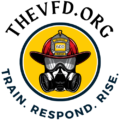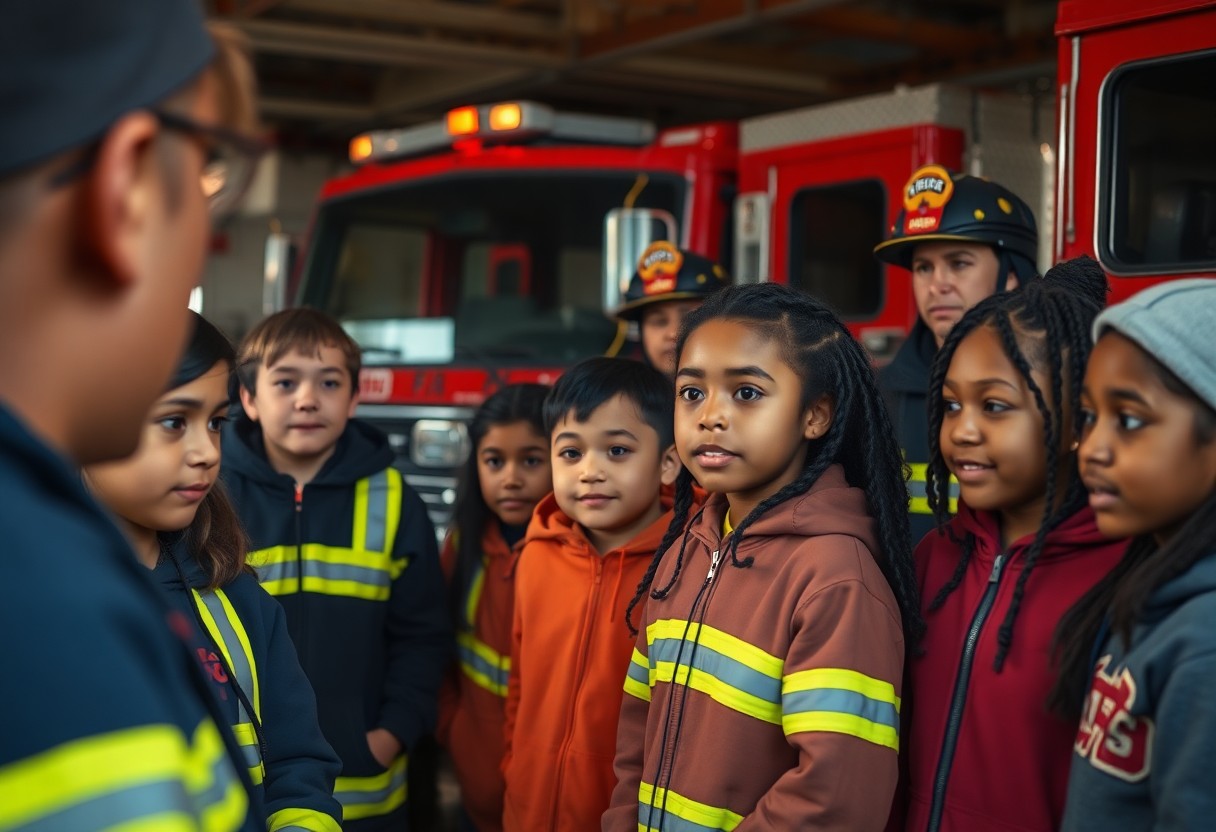Heroes are not just born; they are shaped through dedication and empowerment. If you’re looking to build a pipeline of future firefighting professionals, engaging in youth programs can serve as a unique recruitment tool for your fire department. By investing time in the development of young individuals, you can inspire a genuine interest in fire service careers while teaching them the importance of community service and teamwork. This guide will provide you with the steps to create impactful programs that not only foster skills but also instill a sense of heroism in today’s youth.
Key Takeaways:
- Youth programs can effectively attract and engage young individuals, creating a pipeline for future recruitment within fire departments.
- Involvement in community service and hands-on experiences through these programs fosters life skills and leadership qualities in participating youth.
- Collaboration with schools and local organizations enhances visibility and reinforces the importance of fire safety, providing valuable educational experiences for youth.
Harnessing the Potential of Youth Engagement
Engaging youth in fire department activities not only cultivates future heroes but also brings fresh energy and ideas into your organization. By tapping into the enthusiasm and creativity of young people, you can develop innovative programs that resonate with their interests and aspirations. For example, practical hands-on experiences alongside seasoned firefighters can ignite a passion for service, while mentorship programs may create strong emotional ties to the community. Leveraging this connection can lead to deeper commitment and loyalty among volunteers as they step up to become the next generation of firefighters.
Identifying Key Motivators for Youth Involvement
Understanding what drives young people is vital for fostering their involvement in your fire department. Interests often stem from a desire for adventure, community service, or career exploration. Engaging in activities such as ride-alongs, simulations, and community events allows youth to experience first-hand the excitement and importance of fire service, aligning their passions with the mission of your department.
Building Relationships with Schools and Communities
Establishing strong connections with local schools and communities is fundamental for successful youth engagement. Collaborating with educators can create opportunities for career days, safety demonstrations, and extracurricular activities that promote fire service. In addition, by participating in community events, your department can demonstrate its commitment to public safety and community well-being, enhancing your reputation and attracting young people eager to get involved.
Consider organizing joint workshops or programs with schools focused on safety education, emergency preparedness, or vocational training. By being present in educational settings, you create a supportive network that reinforces the value of the fire service while offering students a chance to explore potential career paths. Highlight success stories of young volunteers in your department to inspire other youth and show the tangible impact they can make, cultivating their desire to contribute.
Crafting Compelling Youth Programs
Building robust youth programs requires a combination of creativity, engagement, and understanding of what captures young people’s interests. Programs that are designed with fun, education, and community service in mind can foster passion for firefighting and the values that come with it. By incorporating elements like mentoring, interactive workshops, and community events, you provide a platform for young individuals to thrive and develop a genuine connection to your fire department.
Designing Hands-On Learning Experiences
Creating hands-on learning experiences is vital to engage youth effectively. Incorporating activities like fire safety simulations, obstacle courses, and equipment demonstrations enables participants to experience firefighting techniques in a fun, immersive way. Programs such as junior firefighter camps can offer realistic scenarios where young participants learn about teamwork, problem-solving, and physical fitness, all while having an exciting time.
Integrating Fire Safety and Leadership Training
Integrating fire safety with leadership training empowers youth to become responsible citizens within their communities. Participants learn imperative fire safety principles, equipping them with the knowledge to educate their peers and families. By layering leadership skills into these lessons—such as communication, decision-making, and conflict resolution—youth develop not only a sense of responsibility towards safety but also the confidence to lead and inspire others.
By weaving fire safety knowledge into leadership training, you create a curriculum that reflects real-world applications. For instance, introducing scenarios where youth must plan emergency responses or conduct safety drills nurtures critical thinking. Furthermore, when kids lead these initiatives, they recognize their impact and responsibility, solidifying their connection to firefighting. Empowering them through active roles and responsibilities instills a sense of pride, ensuring a future generation that values leadership alongside safety. This holistic approach prepares them to not only consider careers in firefighting but also become community leaders who advocate for safety and service.
Innovative Recruitment Strategies
Employing innovative recruitment strategies can transform your fire department into an attractive destination for young aspiring heroes. By adopting approaches that combine creativity with engagement, you can effectively capture the interest of youth and their families. Think beyond traditional job fairs; instead, create immersive experiences that provide hands-on exposure to firefighting and community service. This way, you not only enlighten them about the profession but also encourage a sense of belonging and community commitment.
Leveraging Social Media and Digital Platforms
Social media and digital platforms serve as a vital link between your fire department and the youth you aim to engage. Using platforms like Instagram, TikTok, and Facebook, you can showcase exciting visuals of your programs, share testimonials from current members, and provide informative content about firefighting careers. By curating compelling stories and engaging with audiences directly, you’ll build a vibrant online community that motivates potential recruits to participate in your programs.
Creating a Seamless Transition from Program to Recruitment
Fostering a seamless transition from youth programs to recruitment involves intentional planning and proactive communication. Highlight the pathways available within your department early on, demonstrating how participation in programs can lead to future careers. Consider organizing transition events, where program participants can interact directly with current firefighters, gain insights, and express interest in joining the department. Continuous mentorship and follow-up communication will bolster their confidence and readiness for recruitment, ensuring that the young heroes you nurture today become the professionals of tomorrow.
Measuring Success and Impact
Assessing the effectiveness of youth programs in fostering future heroes requires a structured approach. By establishing clear goals and indicators, you can track your program’s progress and identify opportunities for improvement. Regular evaluation helps ensure that your efforts translate into recruitment success and community engagement, ultimately leading to a stronger fire department that reflects the values of teamwork, courage, and service.
Establishing Metrics for Program Effectiveness
Create specific metrics that gauge various aspects of your program, such as participant retention rates, leadership development outcomes, and engagement levels. Utilizing quantitative data alongside qualitative feedback offers a comprehensive view of success. For example, tracking the number of participants who eventually join your department can serve as a concrete measure of your program’s impact.
Gathering Feedback from Participants and Stakeholders
Feedback is a vital component in determining the efficacy of your youth programs. Actively seek input from participants and community stakeholders through surveys, interviews, and focus groups. This will provide you with insights that highlight strengths and areas for growth, allowing you to adapt your programming to best serve the community and inspire participants.
Implementing regular feedback loops can significantly enhance your understanding of program impact. For instance, conducting anonymous surveys post-program can reveal valuable perceptions regarding participant experiences and personal growth. Engaging with community members and stakeholders during meetings or open forums can also amplify voices that may otherwise go unheard. By valuing their input, you create an inclusive environment that encourages ongoing dialogue, ensuring your youth program evolves to meet the needs and aspirations of future heroes.
Sustaining Interest and Commitment
Maintaining engagement in youth programs requires consistent outreach and a personalized approach. Offering diverse training opportunities and interactive activities keeps participants enthusiastic about their roles. Regular feedback sessions help incorporate their input, creating a sense of ownership and responsibility. Establishing clear pathways for skill development ensures that participants feel their commitment translates into tangible growth and advancement within your fire department.
Developing Alumni Networks for Ongoing Engagement
Creating an alumni network is a strategic way to keep former participants connected to your fire department. By organizing events and providing platforms for alumni to share their experiences, you strengthen ties and foster mentorship opportunities for current members. This network not only supports lifelong friendships but also serves as a valuable resource for recruitment and fundraising, demonstrating the enduring impact of your programs.
Adapting Programs to Evolving Community Needs
Your youth programs must evolve alongside community dynamics to remain relevant and impactful. Regular assessments of local demographics and emerging issues will inform necessary adjustments, ensuring that your initiatives address current concerns. For example, incorporating training that emphasizes disaster preparedness in light of increasing natural disasters may resonate more with participants. Engaging with community partners, such as schools or local organizations, can also facilitate targeted outreach and tailored educational modules that emphasize resilience and readiness.
By incorporating feedback loops and adapting to the insights gained from participants, you create a culture of responsiveness within your programs. Hosting community forums can yield valuable insights beyond statistics, revealing the stories and challenges that shape your area. Each adaptation of your programs allows you to better equip youth with skills and knowledge relevant to their lives, increasing their investment in the fire department as a career choice. This approach not only sustains interest but fosters long-term commitment to your mission.
To wrap up
Following this, it’s clear that youth programs serve as an effective recruitment tool for fire departments, allowing you to build connections with the community and inspire future heroes. By engaging young individuals through mentoring, hands-on experiences, and educational initiatives, you not only foster their interest in firefighting but also develop a life-long appreciation for service. Implementing these programs can enhance your department’s image, strengthen local ties, and ensure a pipeline of passionate recruits ready to rise to the challenge.



